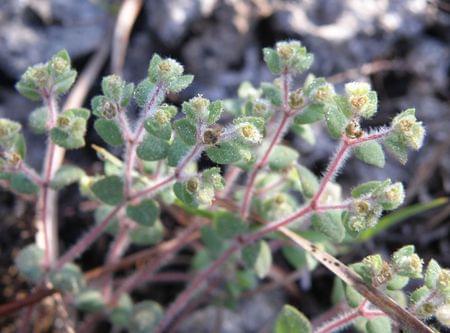The Center for Biological Diversity added four plants to an expanding win column for imperiled Florida species when the U.S. Fish and Wildlife Service last week protected the pineland crabgrass, Everglades bully, pineland sandmat, and prairie clover.

The prairie clover, a fancy member of the pea family that can soar to 6 feet in pine rocklands and coastal uplands, won full guardianship under the Endangered Species Act. The others are now considered threatened.
“This decision underscores just how vulnerable South Florida is to rising seas,” said Jacki Lopez, Florida director with the Center for Biological Diversity.
According to Lopez, the South Florida foursome is beleaguered by sea-level rise, natural fires, and people, including a planned shopping mall and theme park in south Miami. They belong to a troubled neighborhood of federally protected species that make homes in the pine rocklands.
“Without Endangered Species Act protections, storms like Irma could wipe out these Florida natives overnight,” Lopez said in a press release.
The pineland sandmat (above), a candidate for protection since 1999, also happens to be a real looker, a showy perennial herb with a red stem and delicate yellow flowers. The largest population occurs in Everglades National Park.
Florida pineland crabgrass is clinging in the Everglades and Monroe County. Everglades bully is native to Miami-Dade County but only in pine rocklands. Prairie clover (below) is hiding out in Big Cypress National Preserve and on private and county-managed property in Miami-Dade.
» Related: The prickly-apple, a Manatee County homecoming.
The FWS said “the risk of extinction is high for these plants, now or within the foreseeable future, because the populations are small, isolated and have limited to no potential for recolonization.”
The FWS also said a proposed rule designating critical habitat for the four rocky plant stars is likely.
With the decision, 192 plants and animals have won endangered species protection because of a 2011 agreement between Lopez’s group and FWS. Another six are proposed, including the mighty red knot, a tiny bird that depends on Florida for refueling during Antarctic to Arctic migrations.
» Editor’s note: Tap for more about the Center for Biological Diversity’s 757 agreement and sea-level rise campaign.
Outside
Bitcoin mining emissions in China will hit 130 million tonnes by 2024 https://t.co/w6He7so8N2 pic.twitter.com/qYUDtBdeRK
— New Scientist (@newscientist) April 9, 2021
The Gunk Report
For the Blue-Green Algal Bloom Weekly Update from the Florida Department of Environmental Protection, tap here. For DEP's Algal Bloom Sampling Map, tap here.
What, me worry?
» "PLAYING WITH SHARKS," which recently premiered at the Sundance Film Festival, documents diving legend Valerie Taylor.